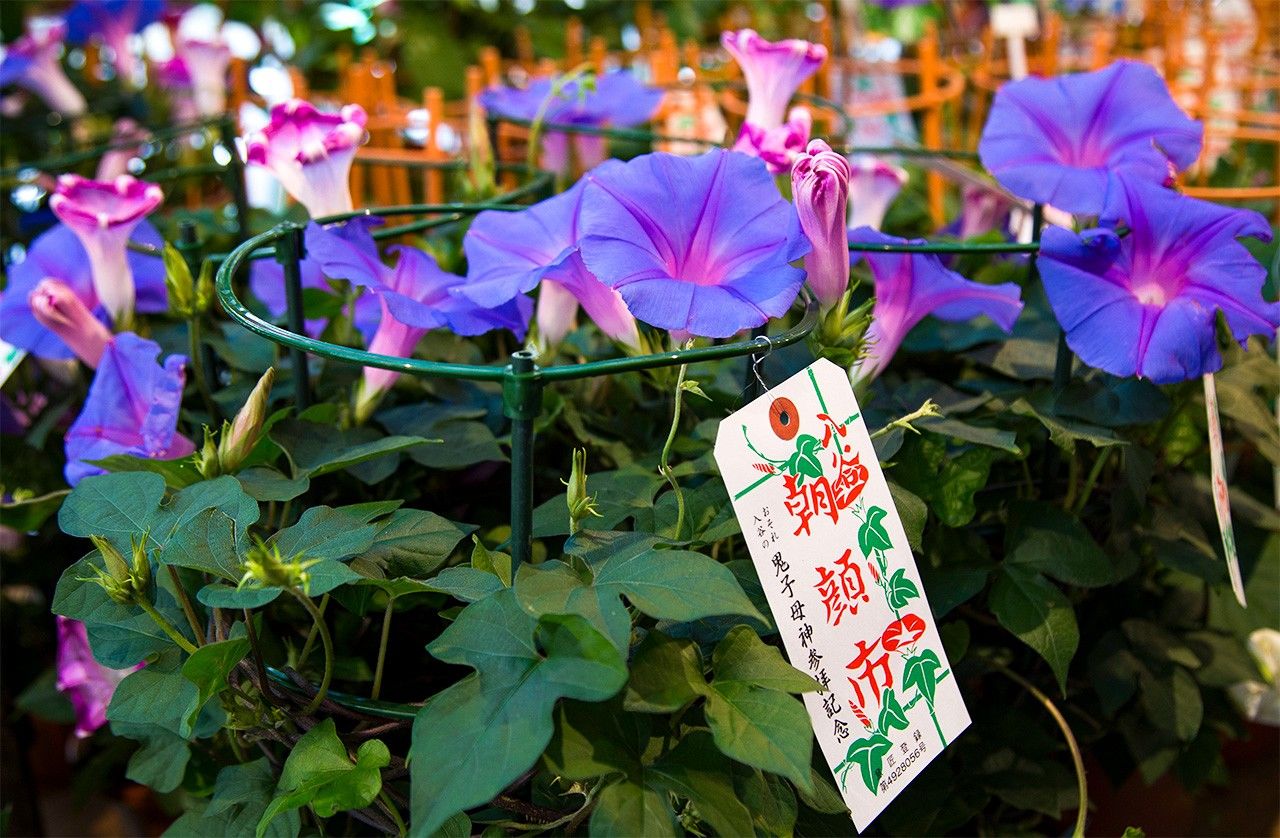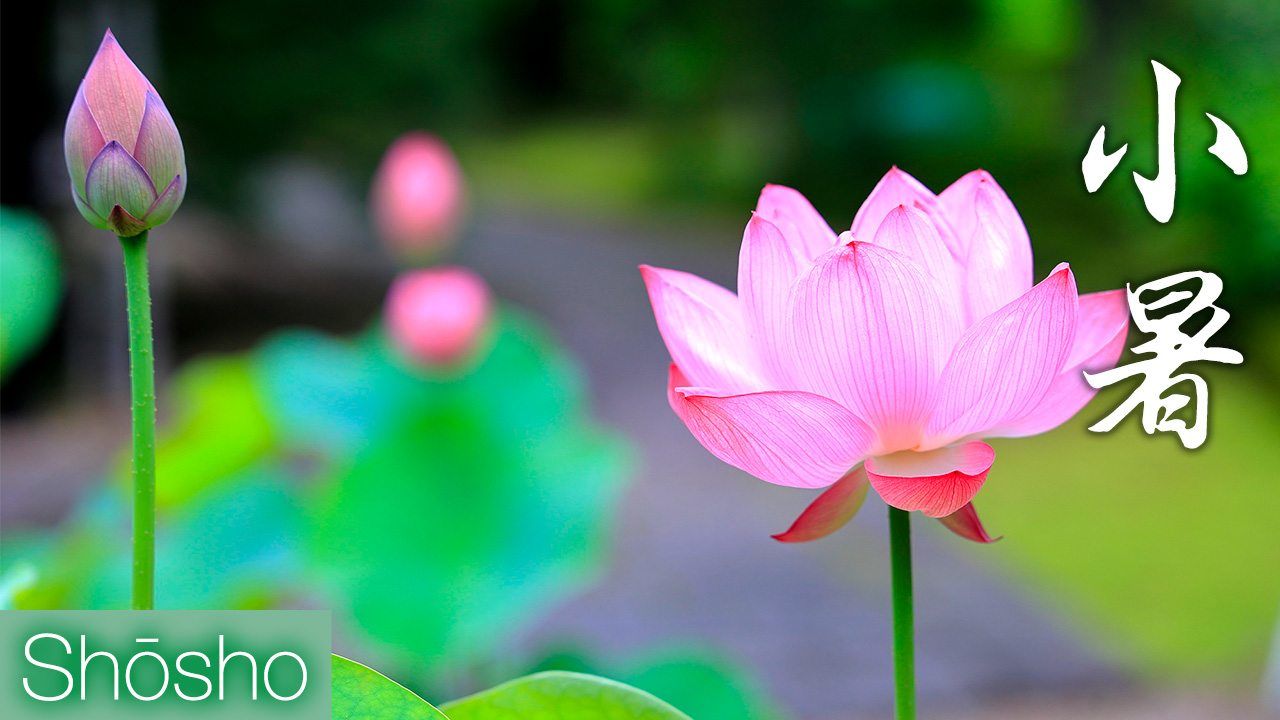
Shōsho (Lesser Heat)
Culture History Environment Lifestyle- English
- 日本語
- 简体字
- 繁體字
- Français
- Español
- العربية
- Русский
Shōsho (Lesser Heat) is the name of the solar term that starts around July 7 on the modern calendar. As speculation about the end of the rainy season grows, there is a tendency for localized sudden downpours (known in Japan as “guerrilla rainstorms”). It is considered high summer until the official beginning of autumn Risshū, around August 7, after which the term zansho is used to describe the lingering late summer heat. Cicadas emerge in song and lotuses bloom.
This article will look at events and natural phenomena in the period roughly from July 7 to 22.
Tanabata (July 7)
Tanabata is one of the five key seasonal festivals of the year (January 7, March 3, May 5, July 7 and September 9). It is held to pray for an abundant harvest, although there are a number of traditions that converge on this date. One is the ancient story from China of the weaver star (Vega) and cowherd star (Altair), another is Kikkōden, when weavers and needleworkers pray for improved skills, as well as Tanabatatsume, when young women weave fabric for garments to welcome the gods.
The Tanabata story, introduced from China during the Nara period (710-794), tells of Orihime (the “Weaving Princess”), who wove every day for her father Tentei (the “Sky King”), who arranged for her to meet and marry Hikoboshi (the “Boy Star”, also referred to as Kengyū, the “Cowherd”). After they wed, they spent their days in leisure, angering Tentei, who separated them on the opposite banks of Amanogawa (“Heavenly River,” the Milky Way) to put them back to work. However, the two lovers were so brokenhearted, they could not work for weeping. Tentei therefore deemed that, if they worked earnestly, they could meet once a year, on the night of July 7. On this evening, it is possible to view the two stars “crossing the Milky Way” to be reunited.
A custom of writing prayers on strips of colored paper and tying them to bamboo grass emerged around the Edo period (1603-1868). The paper comes in five colors: green, red, yellow, white, and purple. These are based on colors associated with the five elements in Chinese cosmology (wood, fire, earth, metal, and water), except that the original black connected with water is not considered lucky in Japan and was replaced with purple.
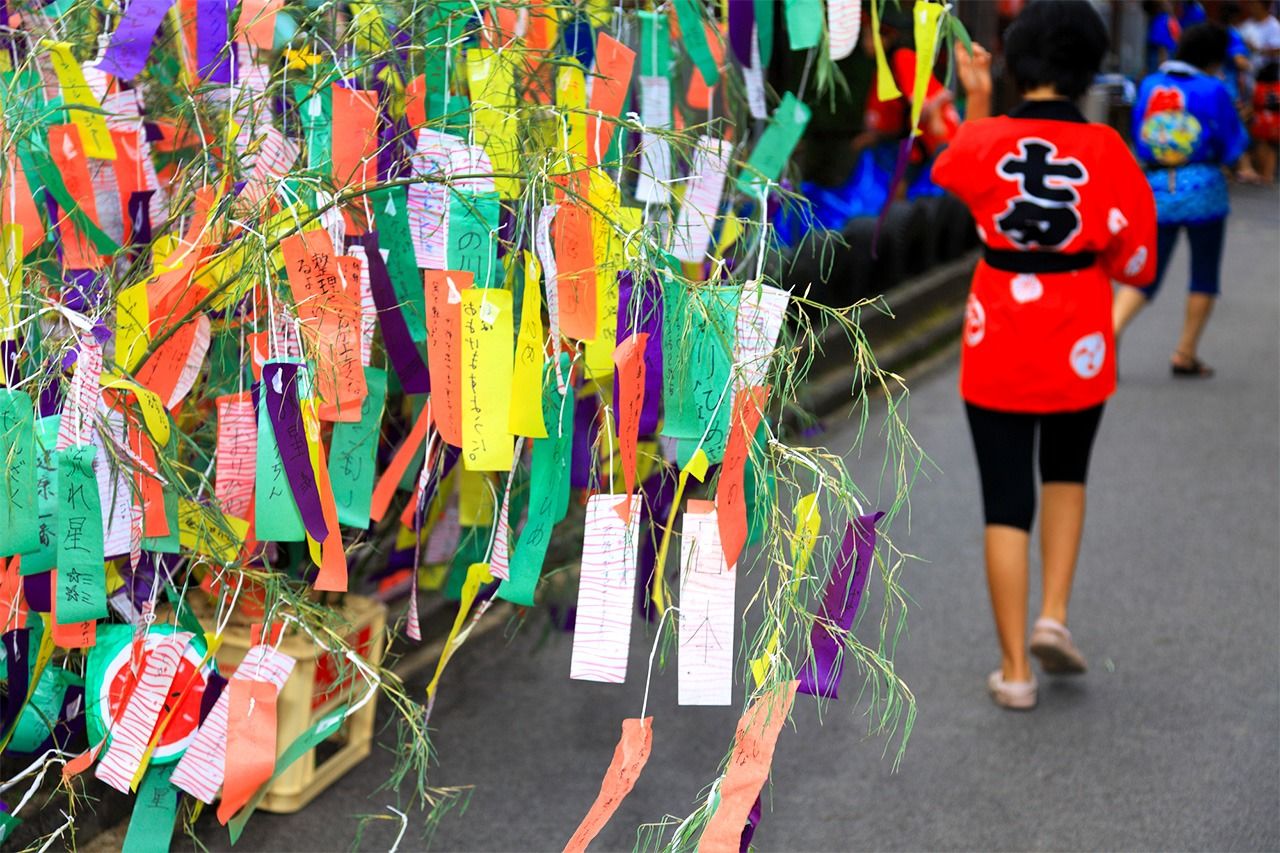
Tanzaku with wishes written on at Tanabata. (© Pixta)
Sōmen, fine white noodles, are a popular food for Tanabata. They are boiled for one to two minutes and then chilled in icy water. The noodles are served with tsuyu, a dipping sauce, and condiments such as shallots, ginger, shiso, and myōga (native Japanese ginger). In the Nara period, people ate sakubei, cord-like noodles made with a blend of wheat and rice flour, which evolved into sōmen in later years.
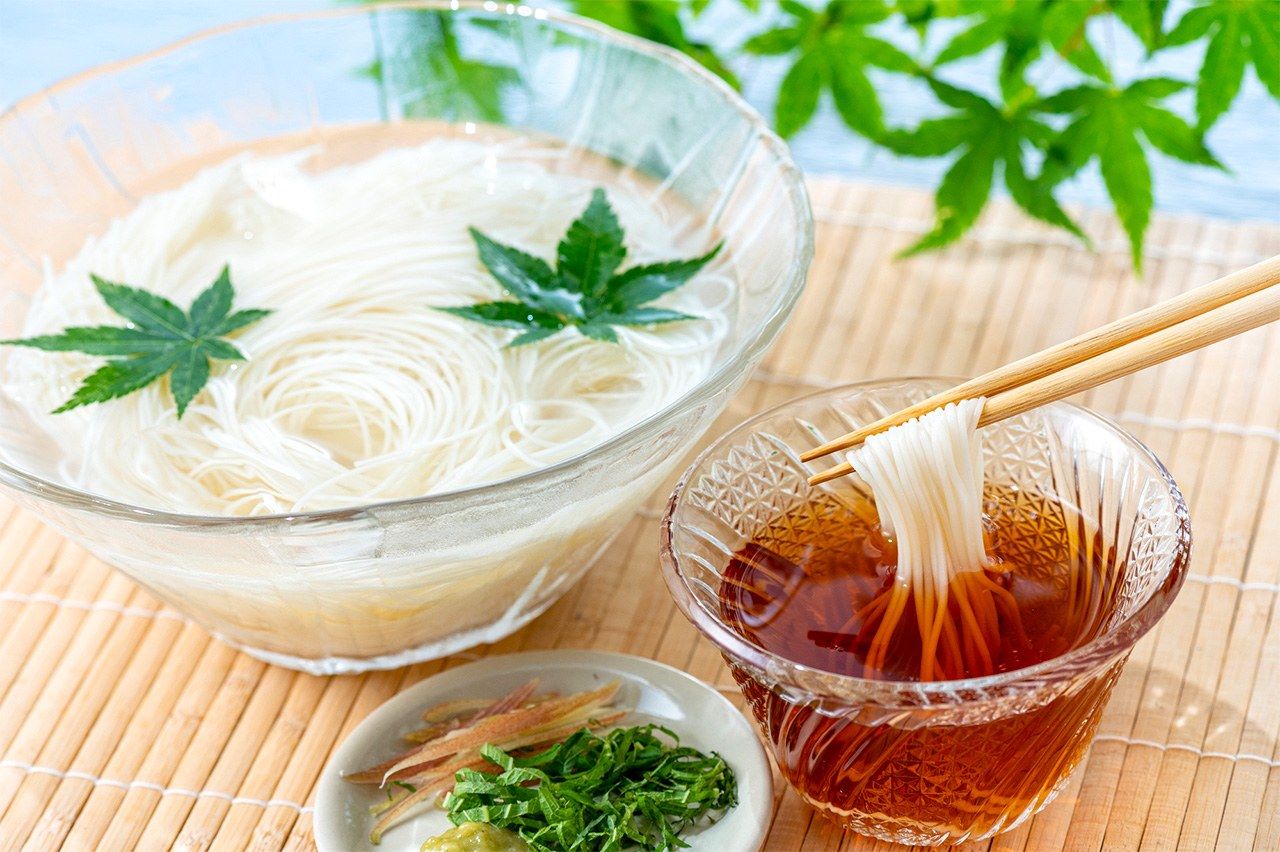
Sōmen with tsuyu, a dipping sauce, and condiments such as shiso and myōga. (© Pixta)
Iriya Morning Glory Festival, (July 6–8)
Early in the Meiji era (1868–1912), a dozen or so gardeners in Iriya in downtown Tokyo cultivated different varieties of morning glory (asagao) with gorgeous flowers, and began holding a morning glory festival. The festival stopped in 1913, but was revitalized by its supporters in 1948. Nowadays, it is a popular event, attracting tens of thousands of visitors.
Yukata
In the Heian period (794–1185), members of the aristocracy wore a single-layer robe known as a katabira for steam bathing, which was mainstream at the time. Bathing in a hot tub became more common in the Azuchi-Momoyama period (1568–1603), and a similar garment, yukata, was worn after bathing to absorb sweat. With the spread of public baths in the early Edo period, commoners also came to wear yukata, usually as pajamas. From the mid-Edo period, yukata became popular attire for bon odori dances and firework festivals in summer.
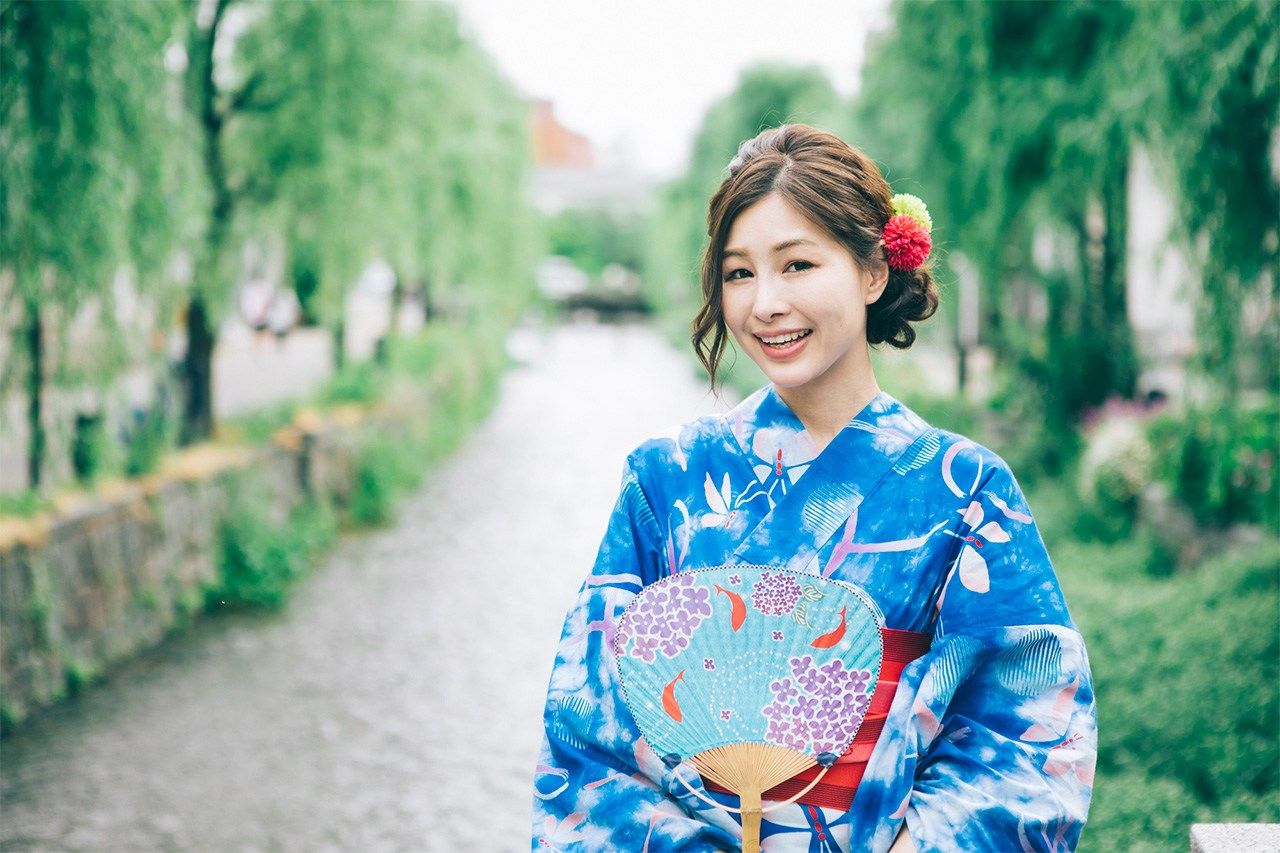
A woman dressed in a yukata holding a fan. (© Pixta)
Hōzuki Market, Sensōji, Tokyo (July 9–10)
A market at which hōzuki are sold. These plants resembling lanterns are a symbol of good fortune—their red color is said to protect against misfortune from the summer heat, and also help to attract good luck. The market held at the Sensōji temple sells hōzuki, wind chimes, and other summer trinkets, with attractions such as goldfish catching, for children and the young at heart. Prayers to the Kannon Bodhisattva on July 10 are thought to bring more merit than on other days.
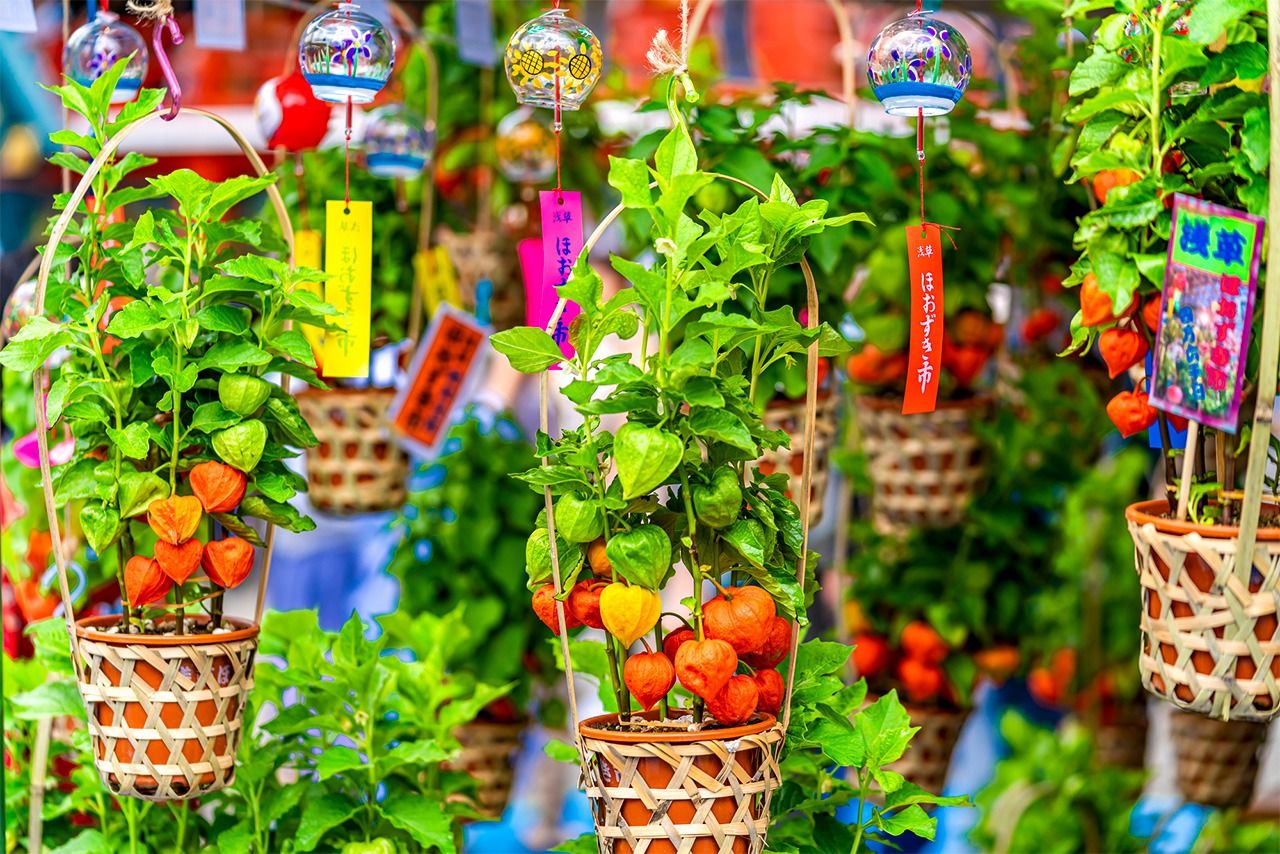
Hōzuki and wind chimes for sale at the Hōzuki Market at Sensōji. (© Pixta)
Lotus Flowers Bloom
The Japanese word for lotus, hasu or sometimes hachisu, is said to derive from the word for bee’s nest, hachinosu, due to the similar appearance of the plant’s seed pod. The lotus is considered the flower closest to Buddha. Almost the entire plant is eaten or used in traditional medicine—the seeds, leaves, stalk, heart, and roots. Early morning viewing events are held at temples, shrines, and parks where lotuses are grown.
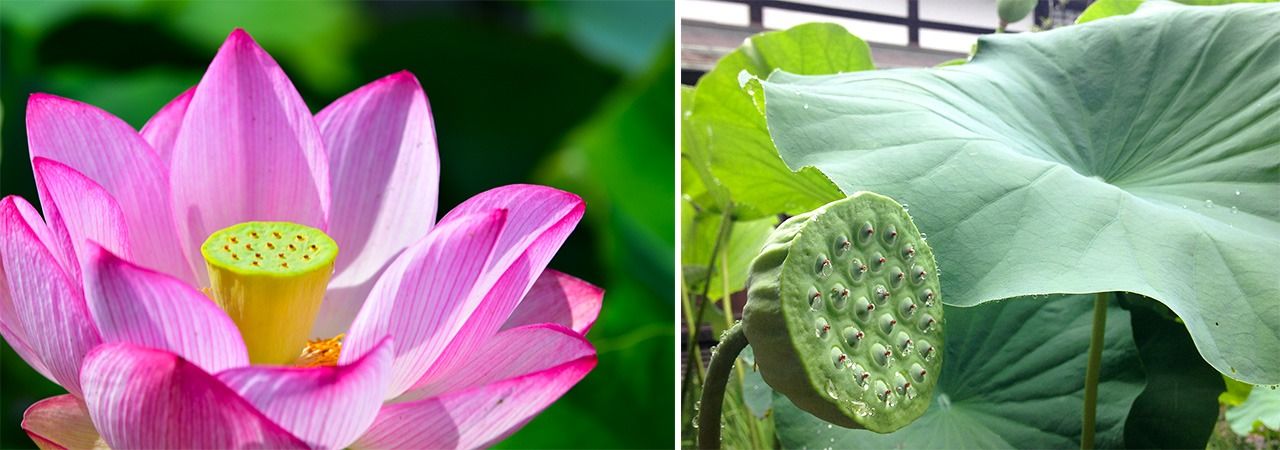
A lotus grown from seeds that were 2,000 years old, at left (© Pixta); a lotus seed pod
Gion Festival, Kyoto (July 1–31)
Gion Festival at Yasaka Shrine in Gion is one of Kyoto’s iconic summer events. It is included in Japan’s top three festivals (the other two being Tenjin in Osaka and Kanda in Tokyo). The ancient festival was first held in the Heian period, in 869, to ward off calamity and pray for good health. While the event runs for a month, from July 1, its highlights are the saki matsuri on July 17 and ato matsuri on July 24. On these days, 33 decorated festival floats, bound together only by rope, without using a single nail, are pulled around the neighborhood, parading their respective deities. The event is listed by UNESCO as Intangible Cultural Heritage.
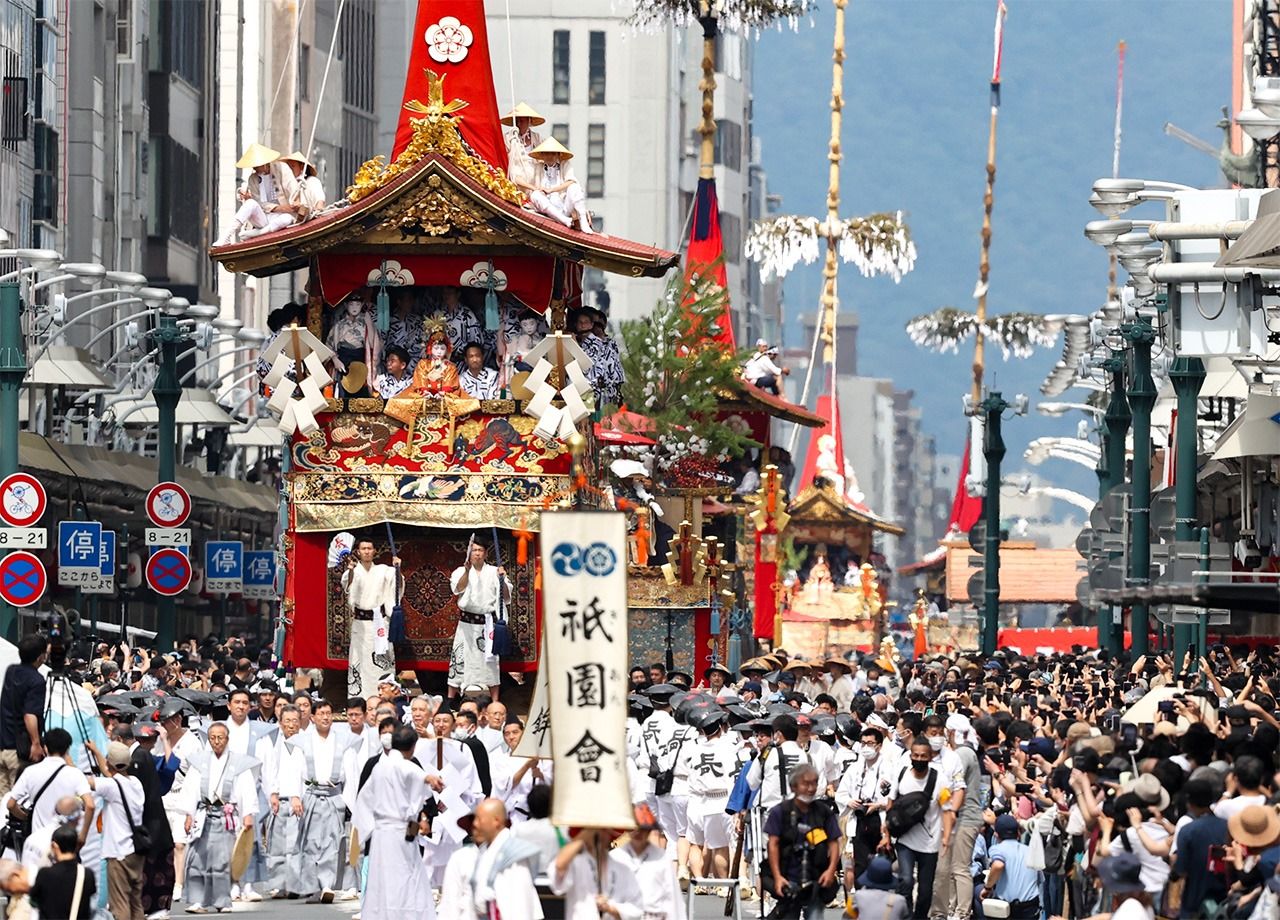
The yamahoko float ceremony during Kyoto’s Gion Festival. (© Jiji)
Chūgen (late-June to mid-July)
Chūgen (中元) is a seasonal custom of giving gifts to express appreciation. Zhongyuan (written with the same characters) on July 15 is one of the three pivotal dates in Chinese Taoism, when it was customary to pay respect to one’s ancestors. The tradition was transmitted to Japan, and people give gifts around this date. In the Tokyo area, this takes place from late June to mid-July, but the period varies by region. Department stores and supermarkets prepare special corners dedicated to chūgen gifts.
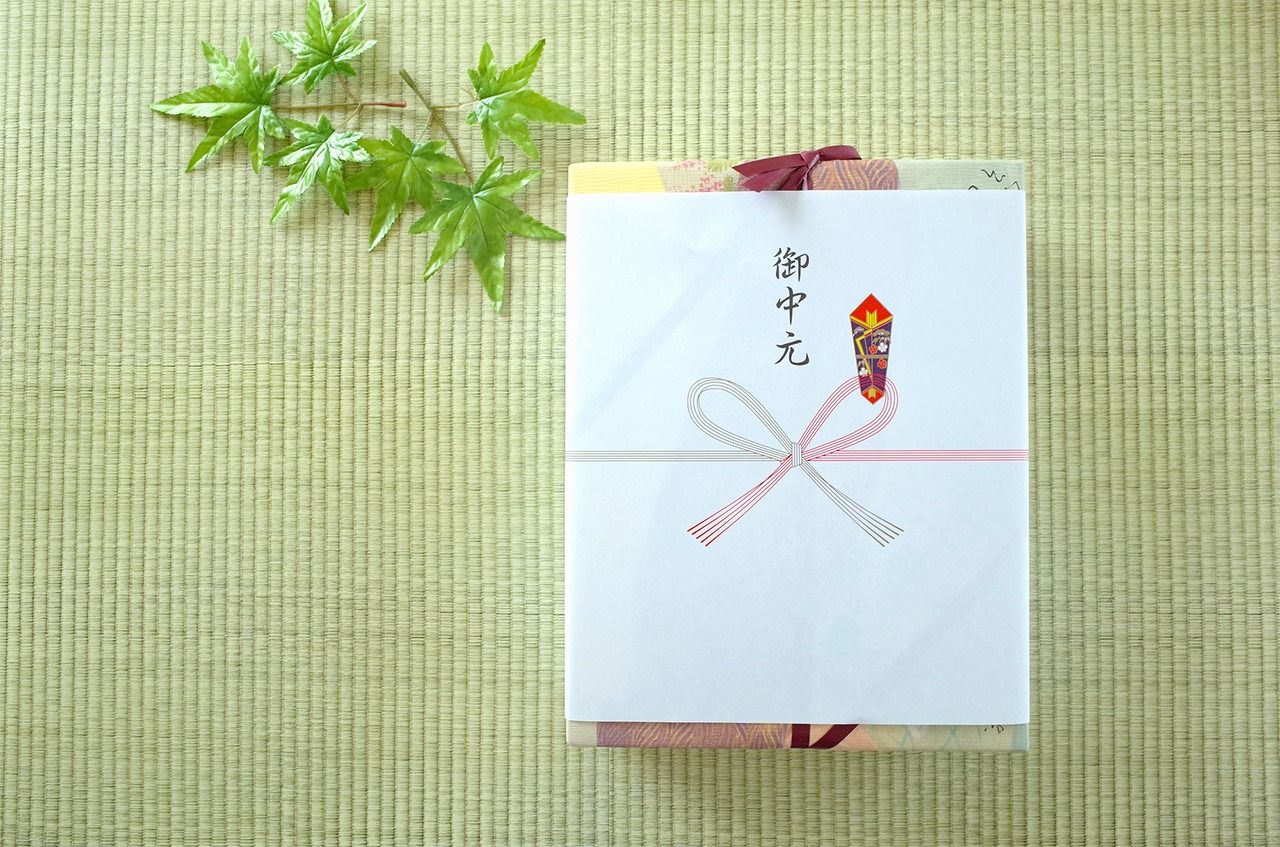
A wrapped chūgen gift. (© Pixta)
Marine Day (3rd Sunday in July)
The third Sunday in July is Marine Day. Beaches for swimming open across Japan from early July. There are also beach huts selling food and drink that operate during this period.
The Doyō Period
Doyō is the roughly 18 days preceding the beginning of each of the four seasons in the traditional calendar. In summer, doyō begins around July 20, leading up to Risshū (Beginning of Autumn), around August 7. Being the hottest time of the year, people eat foods believed to be energizing, to beat fatigue—such as eel, shijimi clams, and eggs.
Eel is particularly popular on the Day of the Ox during the summer doyō. The practice is ancient—Manyōshū, a poetry collection compiled during the Nara period, recommends eel helps to prevent “summer emaciation.” It is commonly eaten as kabayaki—dipped and broiled in soy-based sauce, said to boost stamina—a practice dating to the Edo period.
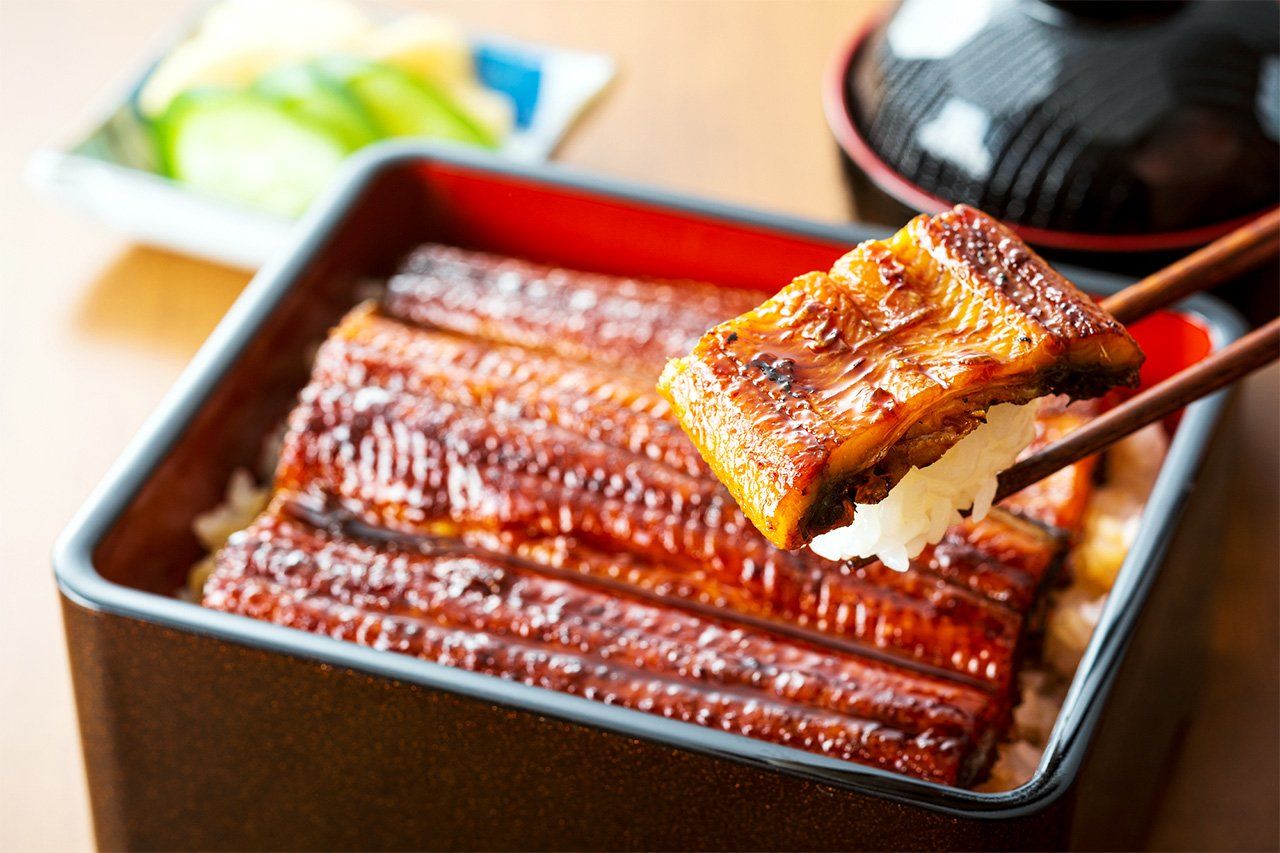
Unajū (eel on rice). (© Pixta)
Sweetcorn
Freshly boiled sweetcorn on the dinner table heralds the arrival of summer. It is in season from June through September. Roasted sweetcorn, with its fragrant aroma, crunchy texture, and sweet taste is a common treat from yatai food stalls at temple festivals during summer. When purchasing, select corn with a lot of silk, preferably with yellow tips.
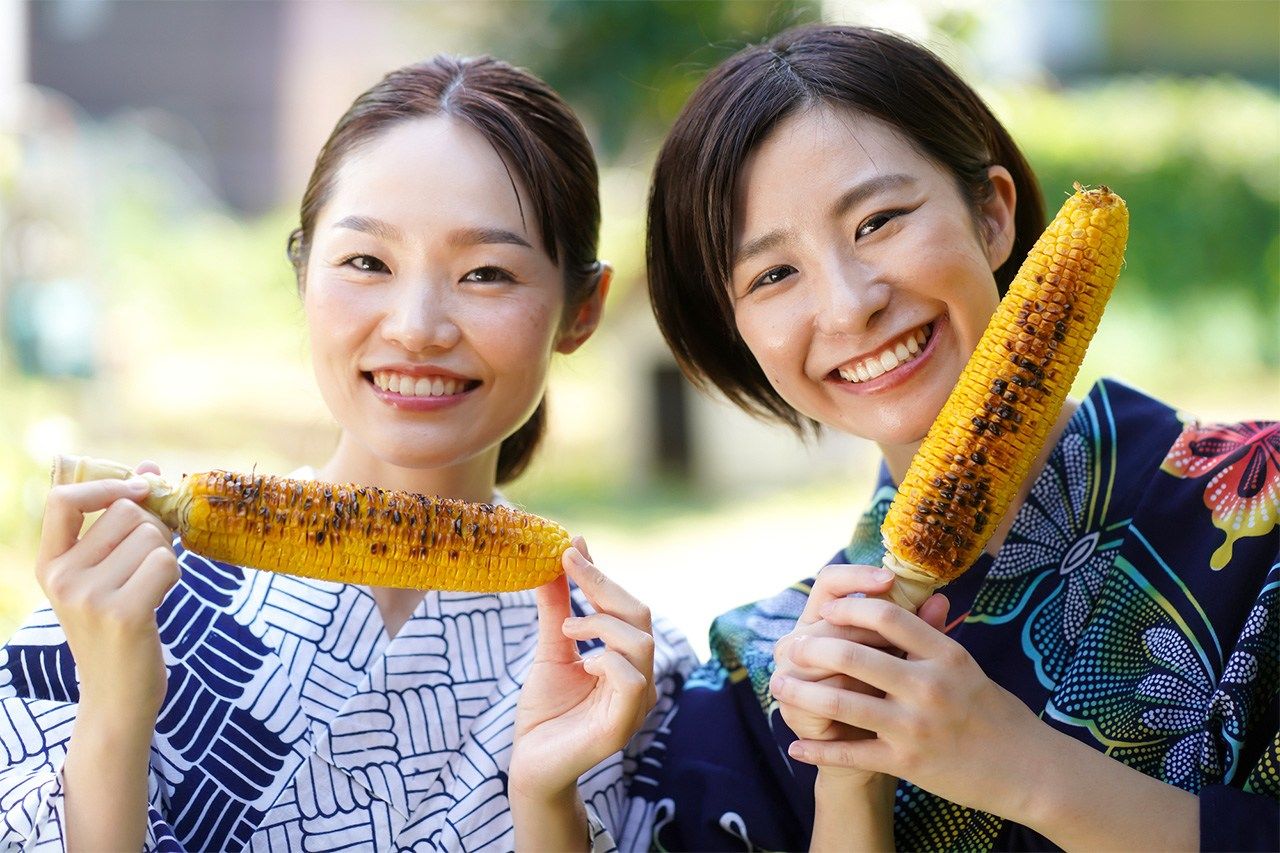
Enjoying roasted sweetcorn. (© Pixta)
Karei (Flounder)
Karei (flounder) is in season in summer. It is a popular white-fleshed fish, and tastes great served as nitsuke (boiled in soy sauce), karaage (deep-fried), or meunière (fried in butter).

Karei (flounder) (left), and boiled in soy sauce. (© Pixta)
(Supervised by Inoue Shōei, calendar researcher and author, Shintō minister, and guest lecturer at Tōhoku Fukushi University. Banner photo: A lotus in full bloom at Hōkongōin, a temple in Kyoto. © Pixta.)
